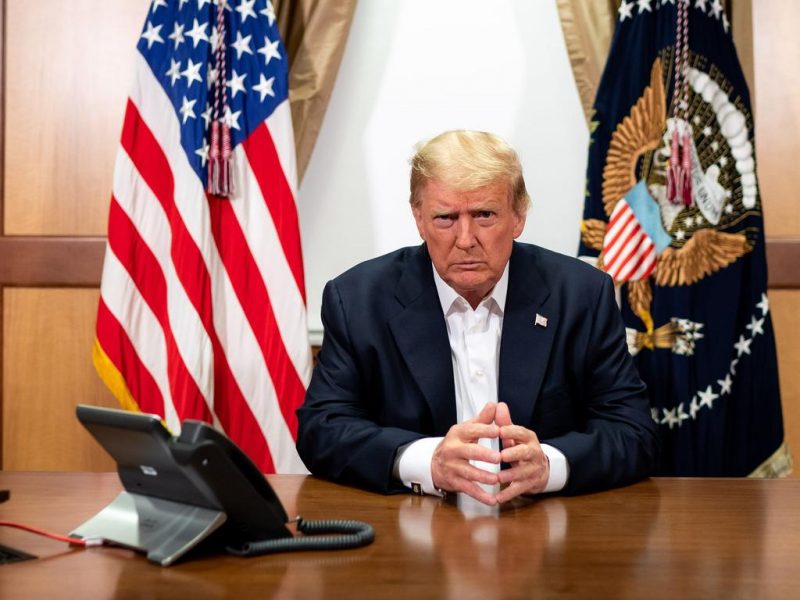- It’s taken only a few days for US President Donald Trump to make a full recovery from his COVID-19 diagnosis
- Trump’s care has included procedures for only the most severe cases, such as steroids, Remdesivir and monoclonal antibody therapy
- The World Health Organisation estimates the average recovery period for COVID-19 is at least two weeks, even for very minor infections
- Trump’s recovery comes as the virus continues to sweep through the White House, with 19 close-circle infections now reported
- Joe Biden has said a second presidential debate should not take place if Trump is still infectious
It’s taken only a few days for US President Donald Trump to return to the White House after testing positive for Covid-19.
In a press briefing on Monday, Trump’s medical team stressed, he had not only met but exceeded all the requirements to be discharged and that, even with no observable symptoms, he would continue to receive treatment from in-house facilities.
Despite the unprecedented level of treatment, which included steroids, Remdesivir and monoclonal antibody therapy, it’s a heroic effort given the World Health Organisation estimates an average recovery period of at least two weeks.
Nevertheless, the White House maintains that Trump is symptom-free, an assertion that’s been backed-up with a string of upbeat videos and “FEELING GREAT!” tweets.
However, a growing number of doctors are suggesting the worst may be yet to come, and the second week of infection is typically the most aggressive.
“Week two is the worst because of the fact that you have the inflammatory response to the virus,” said Cedric Dark, an assistant professor of emergency medicine at Baylor College of Medicine, in an interview with BuzzFeed.
This is known as a “cytokine storm”, can cause severe lung damage and lead to organ failure and even death if gone unchecked.
Robert Wachter, chair of the Department of Medicine at the University of California, is another sceptic of Trump’s miraculous recovery.
“For the next few days, I’d want him 50 feet away from an ICU, not a helicopter ride,” he said.
Perhaps the blasé attitude would be fine if Trump is indeed on the mend, but communication from the White House has been patchy at best and in all cases painfully vague.
Trump’s personal doctor, Sean Conley, even admitted to providing false information regarding the President’s health because he wanted to “reflect the upbeat attitude” of his team and their controversial patient.
“I didn’t want to give any information that might steer the course of illness in another direction, and in doing so it came off that we’re trying to hide something,” Conley said.
The worry comes as COVID-19 continues to sweep through the White House, with an estimated 19 cases so far – the most recent being Stephen Miller, a top aide to the President.
What this means for the upcoming election remains unclear, but Joe Biden has firmly said that no second debate should take place if the President is still infectious.

